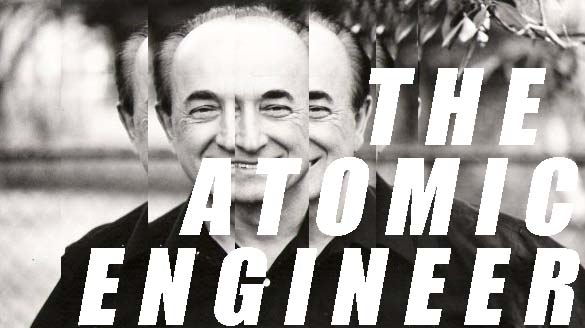A very pure example of deceleration: “Atomization”
Let’s continue reading Viktor Shklovsky’s Theory of Prose (1925/9), seeing what lessons it contains for those of us writing and reading today. To quickly recap the previous installments: Shklovsky posits that all art is built from devices (priem), which get put together in patterns. Those patterns can adhere to normative conventions, or they can be somehow disrupted; Shklovsky calls that disruption “defamiliarization” (ostranenie). We, the audience, can perceive those disruptions because we have some expectation of the conventional ways in which artworks are patterned; for more on this, see my discussion of “differential perception”.
One type of defamiliarization is deceleration: the artist uses one or more devices to delay a pattern’s familiar (and therefore anticipated) resolution. I’ve already discussed how artists can use repetition and tautologies to do that. Today I’d like to look at one more example of deceleration, a very pure example that I call “atomization.” I will demonstrate it using an example from Yuriy Tarnawsky’s novel Three Blondes and Death (FC2, 1993), which also happens to be one of my favorite books of the past 20 years.
What follows is the entirety of Chapter 3 of that novel’s first part: “Hwbrgdtse Makes a Portrait of Alphabette.” I think you’ll quickly understand why I’m quoting it in full; remember, we’re looking for how Tarnawsky delays the resolution of the very simple plot that structures the chapter. All you need to know at this point is that the novel’s protagonist, Hwbrgdtse, has just met and become enamored with the first of three blond women, Alphabette:
Repetition as rule, repetition as defamiliarization,and repetition as deceleration
As promised, back to Shklovsky! In Part 1, we examined his fundamental concepts of device and defamiliarization. In Part 2, we saw how context and history deepen what defamiliarization means. (That’s what led us to take our New Sincerist detour.) Now, in this third part, let’s return to Chapter 2 of Theory of Prose, where Viktor Shklovsky discusses “special rules of plot formation.”
Here it’ll be useful to remember that one of the meanings of rule’s root, regula, is “pattern.” Because Shklovsky is talking less about “rule of law” than he is about the patterns that devices combine to make.
Whenever you write—and it doesn’t matter whether you’re me or Chris Higgs or Mike Kitchell or Kathy Acker or Georges Bataille or whomever—you’re working with conventions. None of us invented these words, nor words, nor their spellings, nor syntax, nor sentences, nor punctuation. We didn’t invent writing. Nor did we invent literary criticism, or essaying, or blogging, or the HTTP protocol that transmitted this post to your computer. We’re all working within overlapping systems that, by virtue of the accident of birth, we find ourselves in. This should cause us no distress because rather than stifle our creativity or inhibit our originality, these systems and their rules provide the very basis for originality and creativity. Without any patterns or conventions we would be left with only noise, in which no innovation whatsoever is perceptible or even possible. It is in fact patterns and conventions that provide the opportunities for disruption and deviation.
In Chapter 2, Shklovsky is trying to understand patterns that authors use when stringing devices together. He isn’t interested in defining every pattern; nor is he interested in critically evaluating them (e.g., “this pattern’s better than that one”). Rather, he wants to examine commonly used ones and demonstrate (the following point is crucial) how even though the patterns are simple and common and predictable, they provide practically infinite opportunity for defamiliarization—and therefore artistry.
In the rest of this post I’ll focus on the simplest of those rules, repetition, with examples taken from Nirvana, Weezer, and Tao Lin.
Another way to generate text #3: “dictionary expansions”
Viktor Shklovsky wants to make you a better writer, part 1: device & defamiliarization
When I was finishing up my Master’s degree at ISU, I worried that I still didn’t know much about writing—like, how to actually do it. My mentor Curtis White told me, “Just read Viktor Shklovsky; it’s all in there.” So I moved to Thailand and spent the next two years poring over Theory of Prose. When I returned to the US in the summer of 2005, I sat down and started really writing.
I’ve already put up one post about what, specifically I learned from Theory of Prose, but it occurs to me now that I can be even more specific. So this will be the first in a series of posts in which I try to boil ToP down into a kind of “notes on craft,” as well as reiterate some of the more theoretical arguments that I’ve been making both here and at Big Other over the past 2+ years. Of course if this interests you, then I most fervently recommend that you actually read the Shklovsky—and not just ToP but his other critical texts as well as his fiction, which is marvelous. (Indeed, Curt has since told me that he didn’t mean for me to focus so much on ToP! But I still find it extraordinarily useful.)
Let’s talk first about where Viktor Shklovsky himself started: the concepts of device and defamiliarization.





